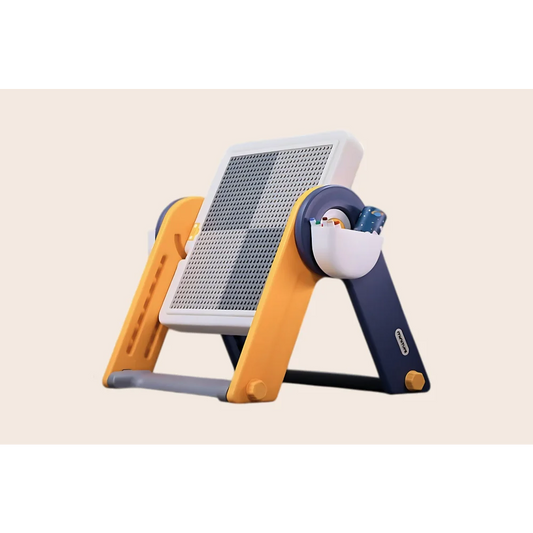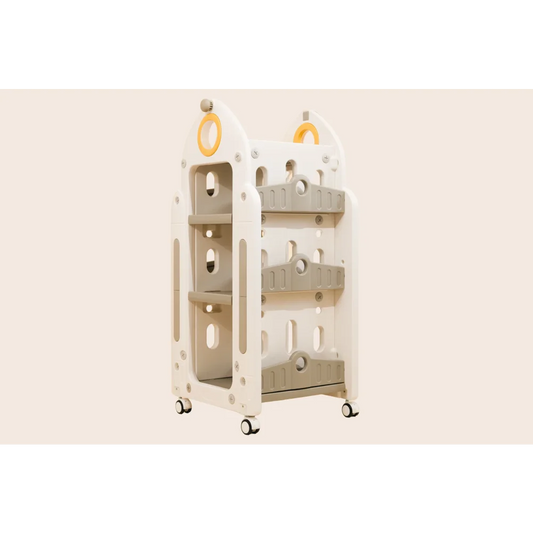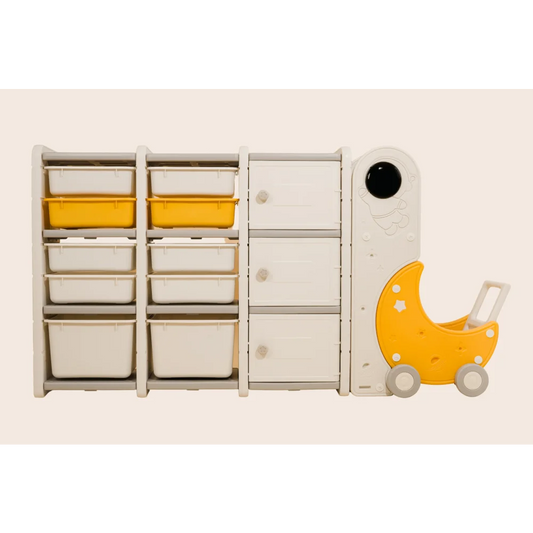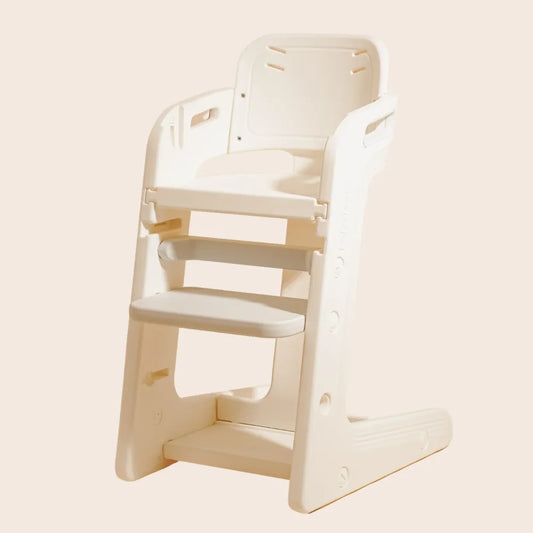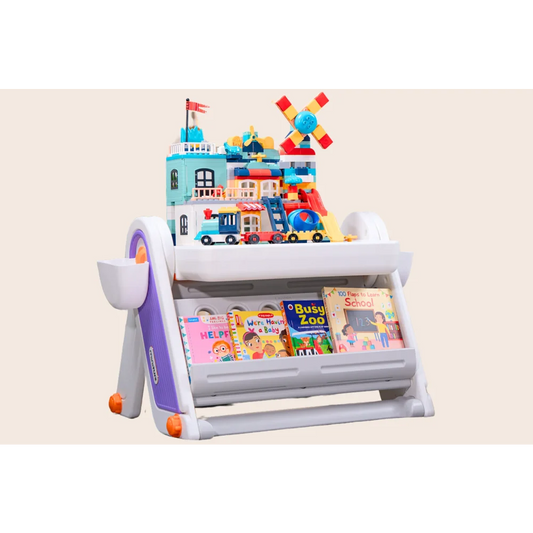Best and Smart ways to store toys: bulky and small toys
As a mother, I’ve come to accept that my home will always have a little (or a lot) of toy chaos. One moment, everything is in place, and the next, my toddler has scattered block pieces across the floor, parked toy cars in kitchen cabinets, and buried stuffed animals under the couch.
While playtime is incredible, stepping on a LEGO in the middle of the night is not. Over time, I’ve learned a few innovative and practical ways to store bulky and small toys without losing my sanity.
Creating Space for the Big and Bulky Toys
Large toys, such as oversized stuffed animals and soft toys, can occupy a lot of space. Instead of letting them take over, our toy organizer's puppy-shaped and car-shaped storage capacities are great for keeping bulky items out of sight when not in use.

Rotating toys is another trick; keeping some out and storing the rest in a closet helps maintain a clutter-free space and excites my toddler when “new” toys reappear.
Taming the Tiny Toys That Seem to Multiply
Small toys have a way of disappearing into the most unexpected places. I used to find tiny cars inside shoes and block pieces under the couch. To keep these in check, compartmentalized drawers {click here} with labels make sorting easy.
Stackable drawer systems help keep sets of small toys together so we don’t constantly search for missing parts.

A magnetic drawing easel lets toddlers scribble, erase, and doodle as much as they want—perfect for little hands learning to grasp and control a pencil. It’s a fun way for them to experiment with shapes and lines while strengthening their wrist and grip for future writing skills!

Color-Coded Bins and Categorized Storage
Kids love bright colors and simple visuals, so why not use that to our advantage when organizing their toys? I’ve found that color-coded bins or categorized storage make a huge difference. For example, art supplies go on a dedicated shelf.
Picture labels work wonders, too—toddlers might not read yet, but they can recognize a little car or a block on a sticker. I keep it simple with phrases like, “Blocks go here, cars go there.” The more visual and straightforward the system, the easier it is for little hands to help keep things tidy!
Quick Cleanup Hacks for Busy Parents
Some days, organizing every toy into a specific category is unrealistic. That’s where quick cleanup solutions come in handy. I keep large, open baskets in different rooms so my toddler can easily toss toys during playtime. Color-coded bins help with sorting, making it easier for little ones to know where things go.
Our push cart adds a playful touch to everyday routines and allows for fun during cleanups. It also opens up opportunities for pretend play and bring toys to the organizer. This simple addition can make the process of initiating cleanup more engaging and enjoyable for both parents and toddlers.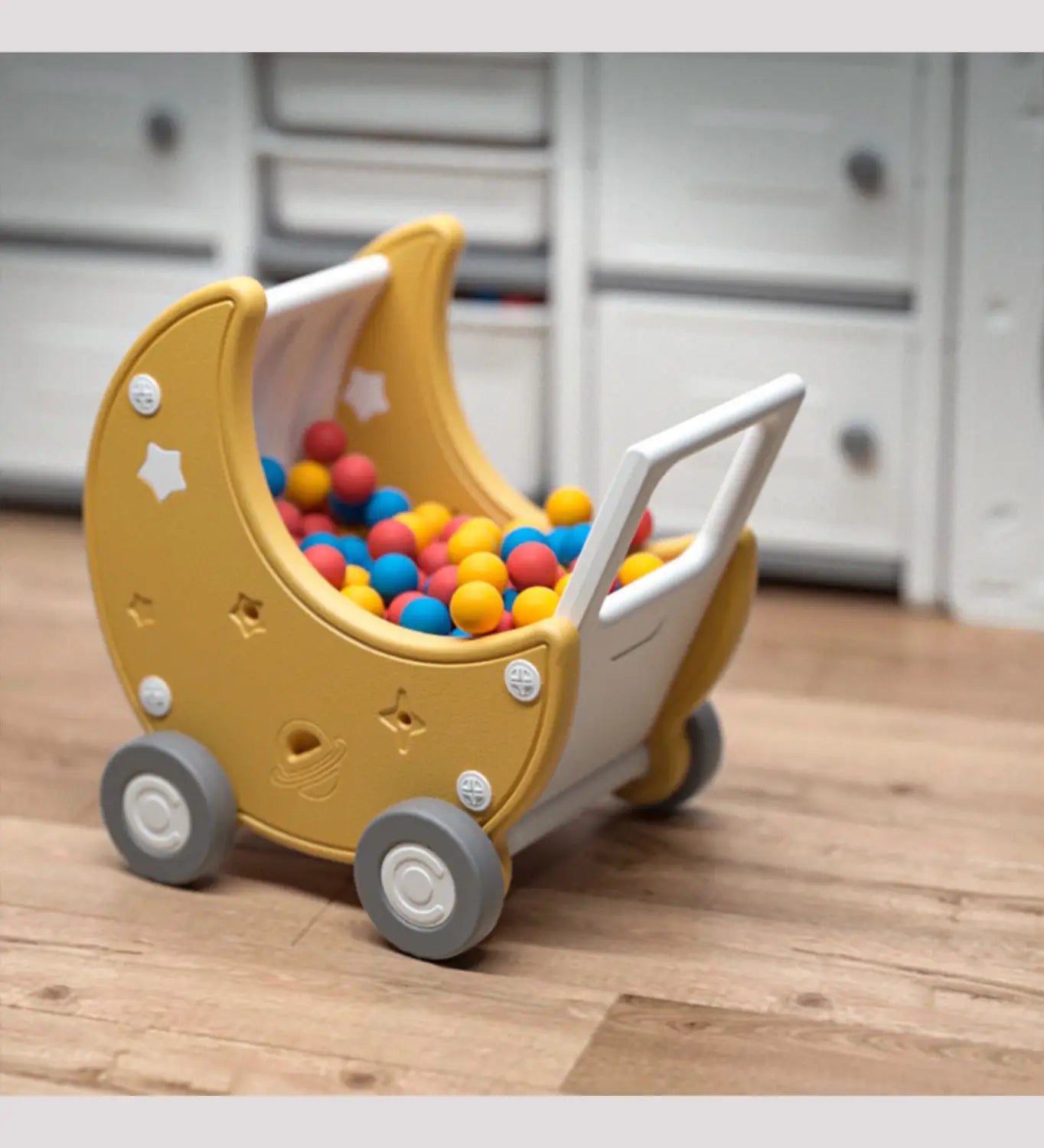
Encouraging Toddlers to Help with Cleanup
Convincing a toddler to clean up their toys can be a challenge. But I’ve found that turning it into a game works wonders. Setting a timer and racing to see who can pick up the most toys before it buzzes makes cleanup fun.
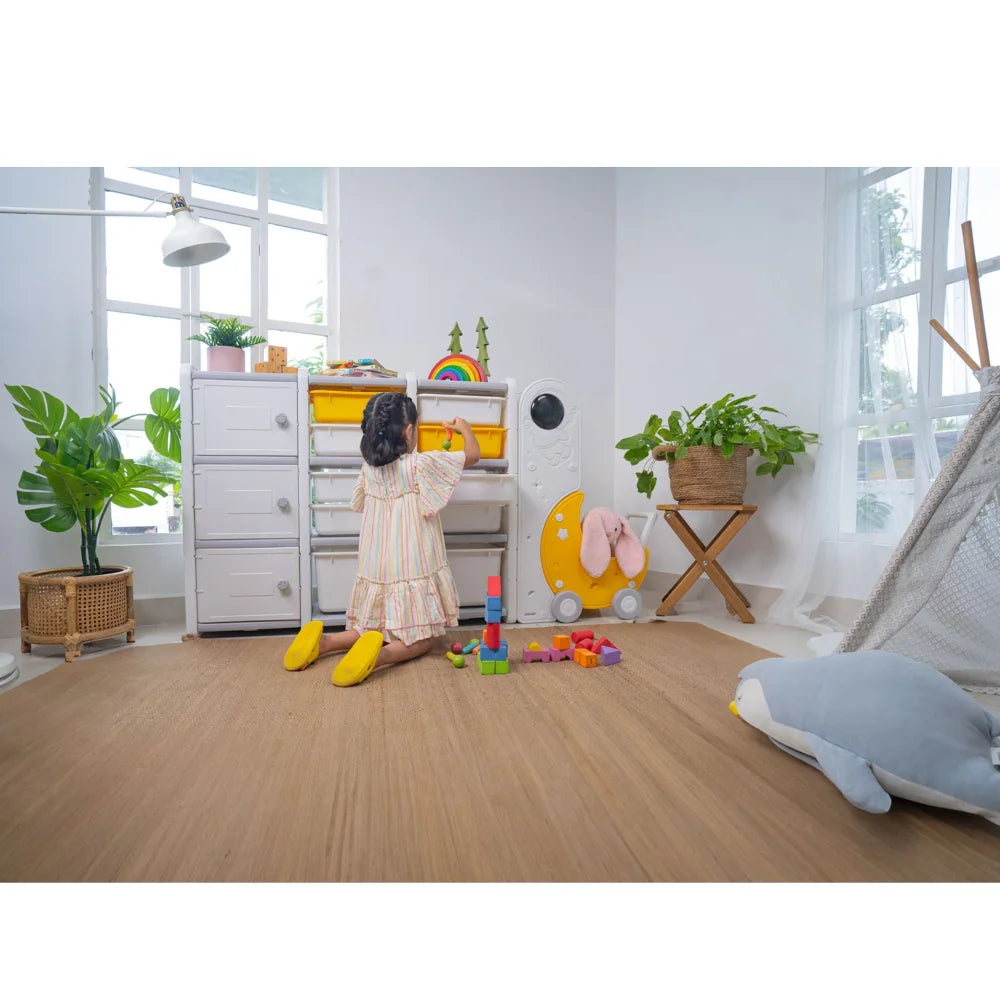
A simple cleanup song engages my little one, and a reward system with stickers or extra bedtime stories adds motivation. Most importantly, I clean up with my child, making it a shared activity rather than a dreaded task.
Finding the Balance Between Play and Order
At the end of the day, a house with kids will never be perfectly tidy, and that’s okay. The goal isn’t to eliminate the mess but to create an organized system that makes cleanup easier while allowing space for creativity and fun.
With the proper storage solutions and a little help from our little ones, we can strike that balance between a home that’s lived in and a home that’s overrun by toys.
